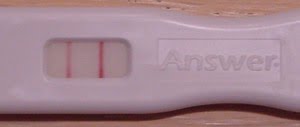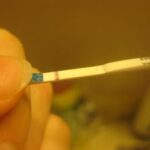Many women decide to chart their temperature as a means of helping them in their quest to achieve pregnancy. However, without a firm understanding of what charting your Basal Body Temperature (BBT) means and the misconceptions that many women have about it, charting your temperature can end up being a waste and a stressful experience for many women.
Misconception #1: Charting my temperature will help me predict ovulation.
In fact, charting your BBT does not help you predict ovulation. Rather, it helps you confirm that ovulation has already occurred. Some women will experience a drop in their temperature on the day of ovulation, and for those women, they can use charting to help time sexual intercourse.
However, for the vast majority of women, they won’t experience a temperature drop like this, and the first indication that they’ve ovulated will be once their temperature rises. When this happens, ovulation has already occurred, and women have already missed their most fertile window.
Charting your BBT is helpful in confirming that you have ovulated, but not in predicting ovulation. It’s necessary to use secondary fertility signs (cervical position, cervical fluid) to do this.
Misconception #2: My temperature goes up and down every day. I must not be able to chart my temperature accurately.
BBT goes up and down daily. When charting, it’s essential to remember that you want to see the big picture. Temperatures of 98.0, 98.1, 97.9 and then 98.2 aren’t a problem, but they are likely something you’d see before ovulation. Add on temperatures such as 98.5, 98.7, 98.8, 98.6, 98.6 to the end of that chart, and it’s pretty obvious that ovulation occurred on the day where the temperature was 98.2.
When charting your temperature, remember not to pay to much attention to the BBT every day. Seeing the big picture and confirming three days of temperatures .3 higher than your previous days is what really matters, not a few days of ups and downs.
Misconception #3: All charts will be triphasic and include three levels of temperatures.
Like the temperature drop on the day of ovulation, not all women will experience triphasic chart patterns. In addition, just because your chart appears to be triphasic doesn’t necessarily mean that you are pregnant. I had a triphasic chart pattern with my oldest daughter, but not with my youngest. Many women will experience a secondary surge of progesterone post ovulation when they are pregnant, but not all.
In addition, don’t assume that because your post ovulation temperatures were around 98.7 and then they are 98.9 that you must be pregnant. Wait until you are 14 days past ovulation and take a pregnancy test. Another way to confirm pregnancy is to continue charting. If you have 3 days of high temperatures past your longest luteal phase thus far, you can be pretty sure that you are pregnant.
Charting can be a very insightful experience. It’s essential to realize that there are some common misconceptions about charting your BBT. While charting your temperature can be helpful and confirming ovulation or pregnancy, there are other things to consider when trying to achieve pregnancy.
Reference:
- I strongly recommend “Taking Charge of Your Fertility” by Toni Weschler.





